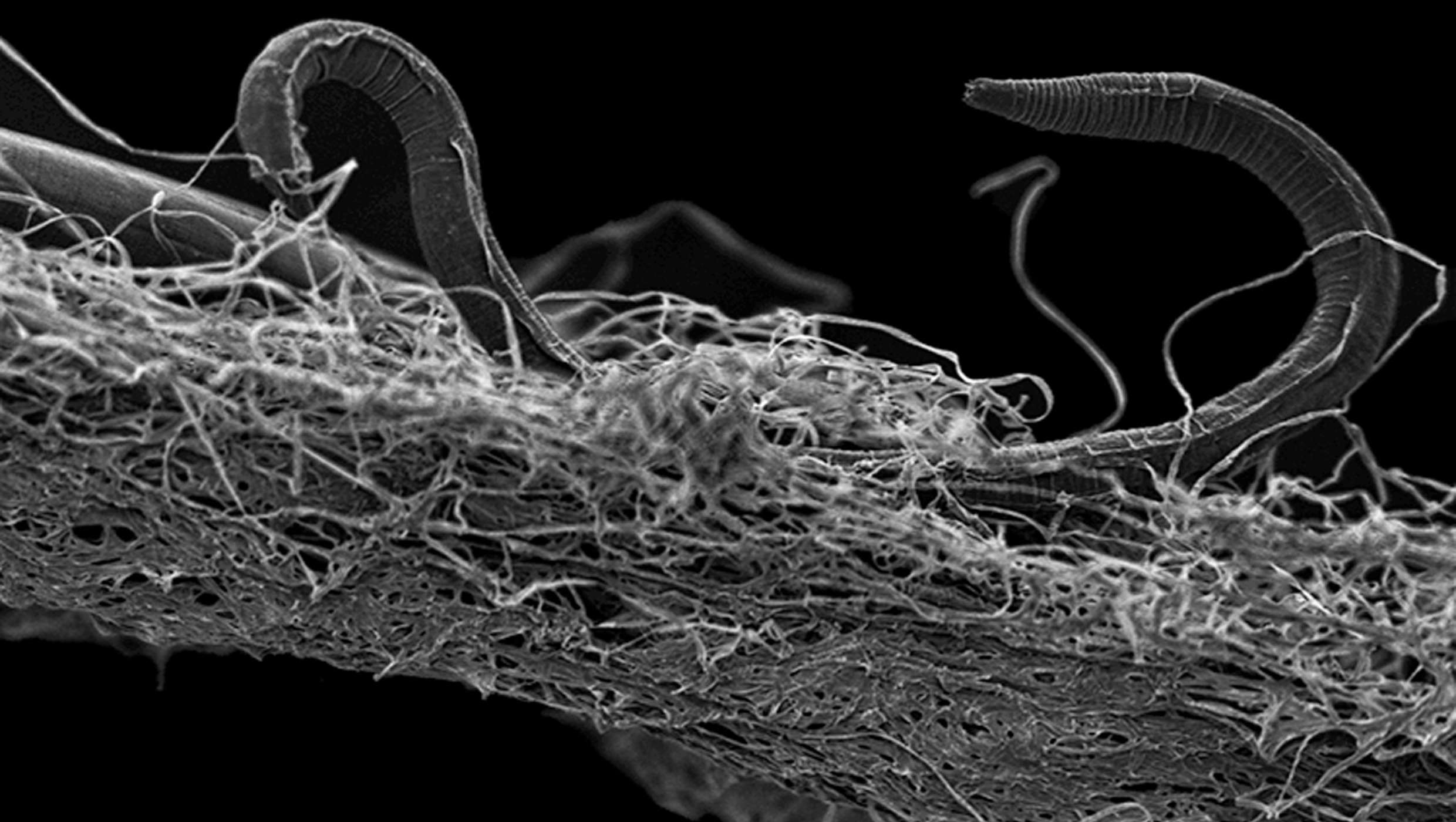Create a free profile to get unlimited access to exclusive videos, sweepstakes, and more!
This worm can survive total cryogenic freezing…could that mean humans will someday?

We recognize cryo-chambers from science fiction, but can any living thing actually survive being totally frozen?
Panagrolaimus sp. DAW1 is a species of nematode that can reanimate even after every single cell in its body has been frozen. Human bodies can’t handle that. While the concept of cryo-chambers inducing suspended animation has been around, and we have made some progress, it is still impossible for someone to emerge from such a deep freeze. Now, scientists who sequenced Panagrolaimus DNA have found out why it has the highest freeze survival rates of any organism (except maybe a tardigrade). And this life form without a brain might be able to teach us something.
“As part of an ongoing effort to understand the molecular mechanisms underlying this nematode’s extraordinary adaptations, [its genes] have been sequenced … and the potential for functional genomic methods has been explored,” said biologist Michael A.S. Thorne, who recently published a study in PLOS ONE.
What Thorne’s team realized was that this nematode can’t relate to previous theories about how organisms and their cells tolerate being frozen. Most all of them at least imply that nothing can survive intracellular freezing. How an organism can survive the freezing of every cell in its body, as opposed to some that only shut down parts of their bodies, was never well understood. Panagrolaimus doesn’t just let subzero temperatures freeze it solid. It actually dehydrates as a cryoprotective measure, kind of like freeze-drying itself. While aspects of its DNA that allow it to freeze and thaw out alive can be found in other species, there was one particular and unexpected gene that its cells actually produced more of in the process of going frozen.
To see this in action, Panagrolaimus specimens were cooled down to 14 degrees Fahrenheit, ultrafast, until ice had formed. Some of its cellular processes slowed down but were active nonetheless. The most important one of these was transcription, the first phase of gene expression during which a gene’s DNA sequence is copied and eventually transferred. Other processes actually improved with freezing. Some immune and stress response levels went up. The increase in one specific protein especially interested the scientists. While its exact function is still hazy, this protein, otherwise known as C-lectin, is part of the group from which antifreeze proteins come from. Think of it as bio-antifreeze.
There was also an increase in an active protein that prevented ice crystals in the frozen worms from growing any larger, but it could not be isolated. Though they were unable to find how the worm produces energy while still frozen, Thorne and his team believe it has to do with protein breakdown. Yet another active protein was thought to be associated with cryoprotective dehydration.
While the functions observed in Panagrolaimus are starting to give us an idea of what it takes to survive a cryo-chamber, much more research is needed before anything is applied to humans. The closest we have gotten to a survivable cryo-state is a state of suspended animation called EPR, in which a patient clinging to life is rapidly cooled to around 50-60 degrees Fahrenheit. Their veins are then drained of blood and pumped with freezing saline. Surgeons then have two hours to operate until the patient is warmed up, given a blood transfusion, and has their heart restarted. Research for EPR continues to be ongoing.














